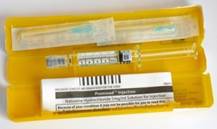
Naloxone is a life-saving drug that reverses the effects of an opioid overdose and can help to prevent overdose deaths.
Opioids are a class of drugs that include synthetic opioids such as fentanyl; pain relievers available legally by prescription, such as oxycodone (OxyContin®), hydrocodone (Vicodin®), codeine, morphine; the illegal drug heroin; and many others.
Loss of consciousness and restricted breathing are common symptoms of opiate overdose, and without attention can result in death or brain injury to the person. Naloxone acts by reducing the level of opiate uptake in the brain, pausing the effects of overdose and giving time for emergency medical assistance to be sought.
In cases where the symptoms of opiate overdose prompt a trained person to administer Naloxone, but the underlying cause is not an opiate overdose, Naloxone remains safe to use. It will have no effect, but the person believed to be experiencing overdose will not be harmed.
Naloxone can be administered either as a nasal spray or, more commonly, as an injection from a container similar to the EpiPens used in cases of severe allergic reaction. Legal controls on Naloxone apply uniformly across all means of administration.
For Nyxoid® nasal spray, 1 spray is equivalent to naloxone 1.8 mg
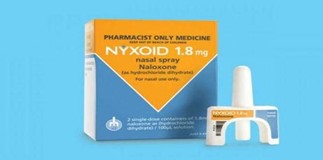
Each pack contains 2 sprays. Advice is to spray into one nostril and if no response second spray after 2-3 minutes into alternate nostril
How to Use a Naloxone Nasal Spray (Nyxoid) | WithYou
1.26 mg Nasal Naloxone (Pebble).
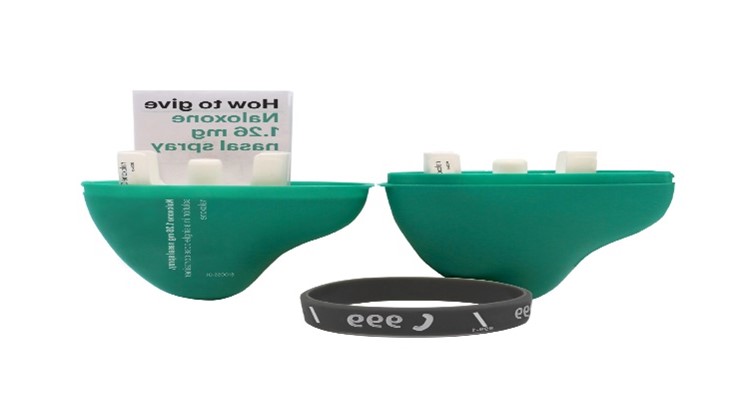
Each pouch contains 2 sprays. Advice is to spray into one nostril and if no response second spray after 2-3 minutes into alternate nostril
How to Use a Naloxone Nasal Spray (Nyxoid) | WithYou
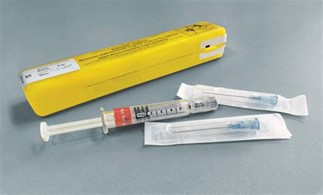
Prenoxad kit contains prefilled syringe contains 2 ml and advice given is to inject 0.4 ml (1/5th) wait 2-3 minutes and then repeat up to 5 times.
How to Use a Naloxone Injection (Prenoxad) | WithYou
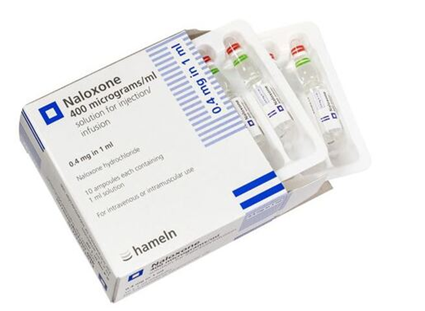
The left image is the Naloxone that paramedics use. You can see that 1 ampoule contains 1 ml solution.
Find out more: https://naloxone.uk/
Naloxone is a prescription only medicine, so pharmacies cannot sell it over the counter. Current legislation allows drug and alcohol treatment and other services to supply it without a prescription if they are making it available for the purpose of saving lives. Anyone can use available naloxone to save a life in an emergency.
Under The Human Medicines (Amendment) (No. 3) Regulations 2015, people working in or for drug treatment services can, as part of their role, supply naloxone to others that their drug service has obtained, if it is being made available to save a life in an emergency. You do not need a prescription to supply naloxone in this way.
The regulations were amended in February 2019 to include nasal naloxone.
For example, a worker in a recognised drug treatment service could supply naloxone for use in an emergency to a family member or friend of a person using heroin, or to an outreach worker for a homelessness service whose clients include people who use heroin.
The types of drug treatment services that can supply naloxone include but may not be limited to:
Current clinical guidance recommends that drug services provide suitable training and advice to people when supplying naloxone.
The 2015 legislation that came into force brings about three key changes:
a) Naloxone can now be supplied by drug services without a prescription.
Naloxone cannot be sold over the counter. It remains a prescription only medicine (POM) but one that is exempted from the POM requirements under specified circumstances, i.e. when being supplied by a drug treatment service to an individual for the purpose of saving life in an emergency.
b) Naloxone can now be supplied to a wider group of people,
This includes a named individual working in an environment where opioid overdose is considered a risk. Naloxone would then be stored in different settings in order to be used in an emergency.
c) Naloxone can be supplied without the express permission of the person using opioids
Under the new regulations, where permission from the opioid user cannot be sought or obtained it is permitted for a drug treatment agency to provide naloxone to an individual without the express permission of the person using the heroin/opioid, to be able to use it to save life in an emergency.
It is important to note that in an emergency situation anyone can use naloxone to save a life, whatever the source.
In December 2024, The Human Medicines (Amendments Relating to Naloxone and Transfers of Functions) Regulations 2024 enabled a wider range of people to supply naloxone without a prescription, under either route 1 (named professionals and services) or route 2 (others registered to supply naloxone). Under these arrangements, these people can supply:
They can only supply naloxone if they:
As well as people working for drug treatment services, others who can supply naloxone without a prescription under route 1 of the legislation include:
Any one of these could supply naloxone for use in an emergency, for example to:
The legal framework enables individuals in professions and services that are not named in the legislation (route 1) to supply take home naloxone subject to registration with a new registration service (route 2). Work to set up this registration service is ongoing, and we will provide further information in due course.
Nyxoid is licensed for use from the age of 14 years old. Prenoxad is not licensed for use in anyone under the age of 18 years old. Nyxoid will be issued to under 16s who use opiates if they are Gillick competent* and in agreement with the service manager and/or service clinical lead.
YZUP staff are trained to administer Nyxoid and Naloxone, but only use Nyxoid with under 18’s. Staff carry Nyxoid with them and can administer it in emergencies or they can train young people on how to use it for friends and family. Staff consult with Team Leaders/managers if they feel they need to give it to a young person for this purpose. Such an example might be a 17 yr old who spent a lot of time with their sibling, who although they didn’t use opiates, they were very risky in their Ketamine use and there were concerns about them coming into contact with contaminated substances. As a harm reduction intervention, the sibling could be trained in administering Nyxoid.
*Gillick competence and Fraser guidelines | NSPCC Learning
If you wish to be trained in the use of Naloxone, please complete the Naloxone Training Request Form
You will undertake a short training course and will be provided with Naloxone.
A log of individuals and agencies trained is kept, updated and accessed by the specialist treatment provider (With You) and the Drug and Alcohol team (DAT) team, Cornwall Council.
Organisations trained in the use of Naloxone are required to enter into a service level agreement with specialist treatment provider (With You) and the Drug and Alcohol team (DAT).
All those trained in the use of Naloxone are required to complete the following form where Naloxone is administered/stolen/tampered with or expires: Naloxone Use & Incident reporting Form | Let’s Talk Cornwall
Individuals at risk of opiate overdose can access Naloxone supplies from their With You worker or the Needle Exchange. With You order Naloxone and other needle exchange supplies via: https://www.exchangesupplies.org . Their Admin team can order on behalf of clients or clients can set up an account and order needle exchange supplies themselves.
With You provide people who use substances with Naloxone and training how to respond to an overdose situation. They also make Naloxone available to family members and friends.
This link shows where and by whom Naloxone provision is held in Cornwall: You searched for naloxone – Safer Cornwall